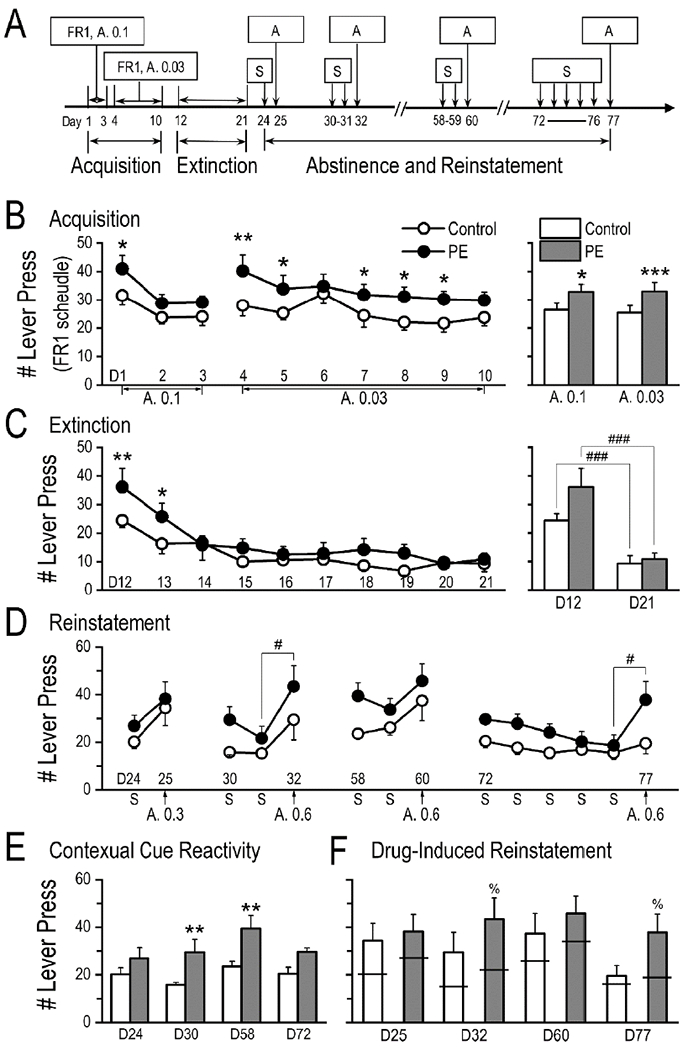Fig. 5.

Prenatal ethanol exposure (PE) led to greater reactivity to contextual drug cues after extended abstinence and amphetamine-induced reinstatement of drug seeking. (A) Timeline of the experiments after pre-training. (B) In the self-administration acquisition phase, PE rats responded more than controls under the fixed ratio 1 (FR1) schedule, at both 0.1 mg/kg/infusion and 0.03 mg/kg/infusion doses. Left panel depicts daily sessions; right panel is a summary graph of averages across sessions. (C) Successful extinction of drug seeking was observed in both control and PE rats (right panel, by comparing the first and last days of extinction training), although during the first 2 days of extinction training, PE rats exhibited higher responding than controls (left panel, each circle/dot depicts the average across two daily sessions). (D) Session data from 4 reinstatement tests (and corresponding baselines) after different lengths of drug abstinence. (E) Summary graph showing higher reactivity to the contextual drug cue (the testing chamber) in PE rats than in controls after extended drug abstinence (on days 30 and 58). (F) Amphetamine (0.6 mg/kg, s.c.) -induced reinstatement of self-administration was observed in PE but not control rats on days 32 and 77. The horizontal bars reflect mean baseline responding. Data are presented as Mean ± SEM. Abbreviations: A, amphetamine (the number following A represents the dose applied); D, day (followed by the testing day number, details in Fig. 5A); S, 0.9% saline. *: p < 0.05, **: p < 0.01, ***: p < 0.001, control vs. PE rats; #: p < 0.05; ###: p < 0.001, between 2 sessions in the same group; %: p < 0.05, baseline vs. reinstatement session in PE rats, planned comparisons after ANOVA.
